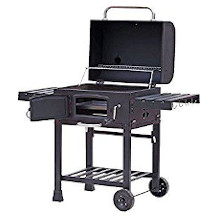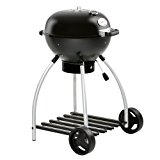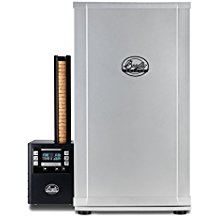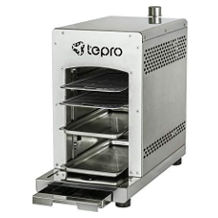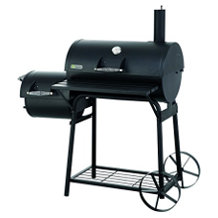3 burner gas grill purchasing advice: how to choose the right product
- What you need to know
- Gas grills cook food faster, more conveniently, and healthier than wooden barbeques.
- No smoke means you can BBQ on your balcony without disturbing anyone.
- Indirect cooking is possible – using the lid means the grill can act like an oven.
- Having a grill with three burners means you can have three different temperature zones.
- There is a wide variety of designs: ones on wheels, tabletop models, compact BBQs, and integrated grills.
Advantages
Grilling doesn’t just have to be for summer. Whether in the garden or up on the balcony, juicy steaks and delicious charred vegetables are loved by everybody. However, opinions differ when it comes to the grills themselves. Some purists like electric grills, whereas traditionalists swear by wood fired BBQs. Perfectionists, on the other hand, often appreciate the advantages of gas grills:
- Quick to warm up.
- Improved heat control.
- More even heat distribution.
How do they work?
Gas grills cook food using thermal radiation. Heat is generated by burning gas, more specifically, liquid gas (a mixture of propane and butane). Most gas grills work with the normal kind of gas bottles you can pick up at the homeware store or gas station.
The gas you’ll need usually comes in refill bottles, but some grills may also work with single-use bottles. These small bottles are useful in a pinch, but they’ll only last for a few hours. Buying a bigger bottle is always worth it, especially since 3 burner gas grills tend to use a bit more than their single burner cousins.
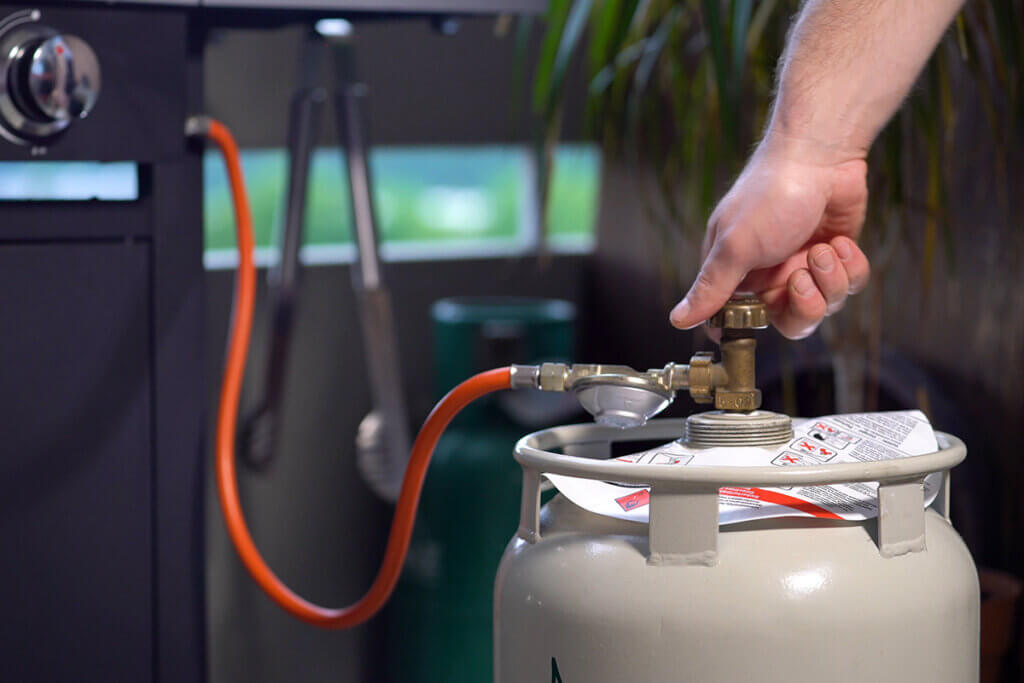
Installation and pre-heating
Gas travels to the burners via a hose from the bottle. The burning gas heats up metal grates – either directly, or via a lava stone placed underneath. The more burners, the more evenly you can spread the heat, so we’re only looking at grills with at least 3 burners.
When you have multiple burners, you can set up different temperature zones. This is great for cooking different things simultaneously: fish needs lower temperatures because it is so delicate, whereas things like sausages and steaks can take a higher heat. Being able to control the temperature means you can avoid having too hot a BBQ – nobody likes burnt or dry food.
The big advantages of gas grills compared to other types is that they always have a removable lid. This means you can use them like an oven and cook things indirectly.
Quick, easy, smoke-free
There’s good reason that gas grills are becoming ever more popular: firstly, they heat up very quickly – no need for the long pre-heating process as with charcoal BBQs. All you have to do is turn the gas on, rather than making a fire half an hour beforehand. Spontaneous barbequing is totally possible with one of these grills!
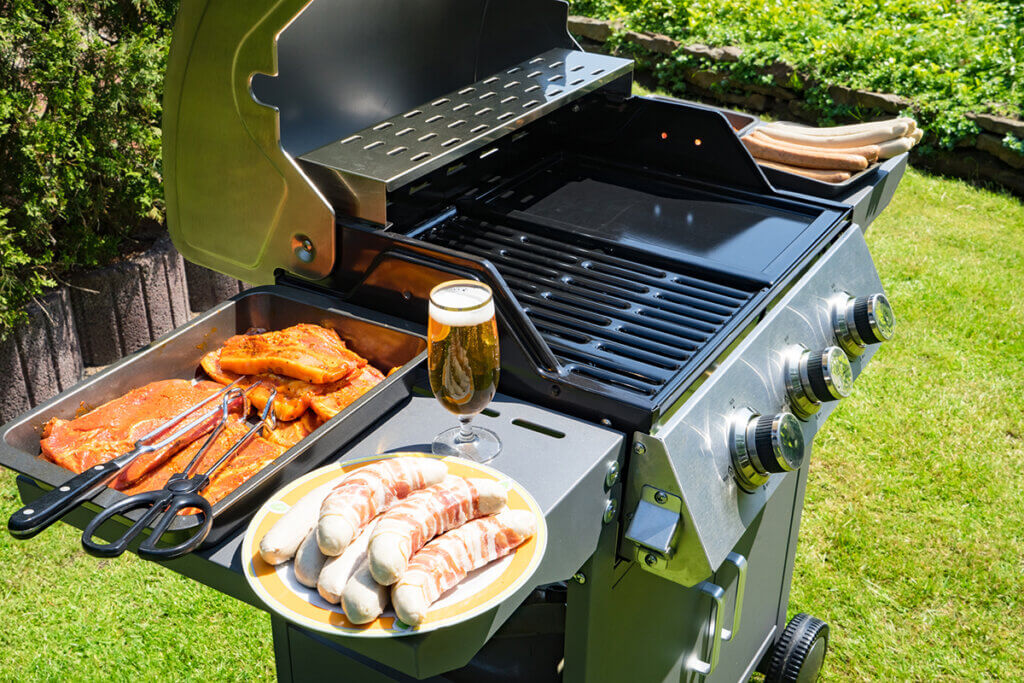
In the medium-term, buying gas bottles also ends up being cheaper than wood and charcoal. Gas is also in general safer than messing around with glowing coals, but you must install the gas bottles properly.
Thanks to the quick pre-heating time, cooking is much faster with a gas grill. In addition to this, gas grills don’t produce any ash or soot, which can be time-consuming to clean. In fact, cleaning a gas grill is quick and easy. Another advantage is that gas grills don’t cook over direct flames. Not only does this mean you can cook things more gently, it also means that you avoid any of the carcinogenic molecules that are created when food is burnt.
Good smells only
Gas grills are great for balconies and terraces because they don’t make much, if any, smoke. You won’t be annoying any of your neighbors.
Gas grills are simple and easy to use. They have dials to control the temperature of the burners – multiple knobs mean you can control the heat going to different zones on the grill. Gas grills can also be used with things like pizza stones or casserole dishes to make stews or flatbreads. In fact, the best gas grills can cook an entire menu. Let your creativity loose!
Gas grills are usually more expensive to buy than wood or charcoal barbeques, but this initial outlay quickly pays itself back since they are cheaper to run.
Advantages at a glance
- Quick to pre-heat
- Fast cooking
- Safer than charcoal grills
- Effectively smoke-free
- Simple to use
- Easy temperature control
- Versatile
- Cheap to run
- Fast and easy to clean
Important purchase criteria
When choosing a 3 burner gas grill, there are a few things to look out for. The main things to consider is how many people you’d like to be able to cook for, whether you want to move the grill around, and what you’d like the grill to look like.
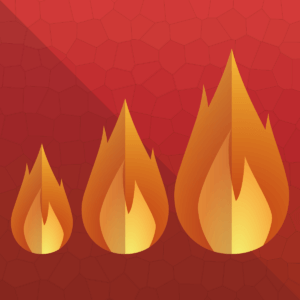
Heat output
Heat output is measured in kilowatts (kW). It determines how hot your grill can get – the higher the kW value, the hotter the grill. Compact tabletop grills should have a heat output of between two and five kW. Larger grills can have between 10 and 16. As a broad rule, the larger the grill surface, the higher the heat output value you’ll need.
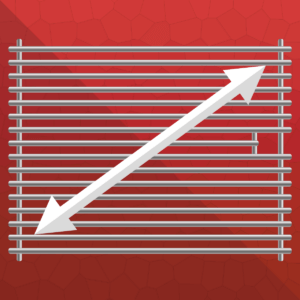
Grill surface size
Choose your grill size based on how many people you want to cook for. Having a bit of extra space never hurts as well, so it’s often a good idea to overcompensate. As a rough rule, grills that are around 300 square inches (2000cm²) or less are best for up to two people. Anything above that will be great for a family, but if you’re cooking for a crowd then look for a grill with a cooking surface bigger than 550 square inches (3500cm²).
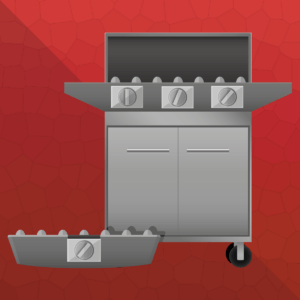
Design
Most gas grills on the market are freestanding, with wheels so you can move them around. However, you can also get gas grills which integrate much like a conventional cooker into your outdoor kitchen. There are also tabletop grills which are highly mobile – great for camping or even for the balcony.
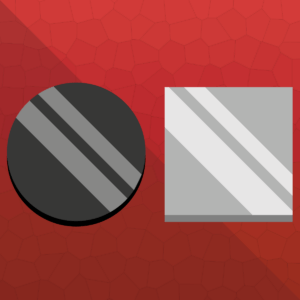
Materials
Gas grills made from stainless steel aren’t just stylish, they’re also extremely durable. They are, however, comparatively more expensive. Grills made from cast iron need more maintenance to prevent any rust from forming. Powder or enamel coated iron grills scratch easily, which leads to rust.
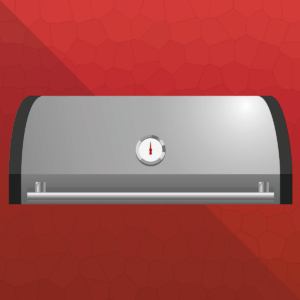
Lid and thermometer
The ace up a gas grill’s sleeve is its lid. With it, the grill can cook things indirectly like an oven. Without it, the gas grill is hard to distinguish from its charcoal cousins. Being able to close the lid and check the temperature through the inbuilt thermometer is extremely useful. The thermometer shows exactly when the grill is properly preheated or when food is perfectly cooked so you get tender and juicy results.
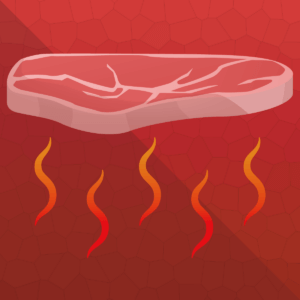
Heat distribution
There are a range of different heat-transferring materials used in gas grills on the market. Porous lava stones store heat particularly well and give off some of that charcoal charred flavor, but they are a bit of a pain to clean. Moreover, the stones can end up picking up a lot of grease, which can cause fires. Ceramic bricks on the other hand are easy to clean (they are dishwasher-safe), so the risk of any fires catching due to grease is low. Metal heat distributors have practically no fire risk.
Indirect grilling
Indirect grilling is a barbeque method where food is cooked gently away from direct flames. It can produce some deliciously juicy results! 3 burner gas grills are perfect for indirect grilling because you can set up hot and cold zones by not turning all the burners on.
Cooking food indirectly in a gas grill is very similar to a convection oven. The food isn’t being cooked directly from a flame underneath. Instead, the heat circulates around the grill (kept in by the lid) and cooks the food from all angles. Indirect grilling is great for larger pieces of meat, especially whole animals, because you can cook them through without burning the outside. Some gas grills have a rotisserie function, but when you’re working with tender ingredients which can easily fall apart, indirect grilling is best. The one thing to pay attention to is the thermometer when grilling – too hot, and you’ll end up with burnt food!
Tip: use a drip tray
Using a drip tray when you’re indirect grilling has two advantages. Firstly, you can save all the delicious juices and fat that melt while cooking. Secondly, drip trays prevent any fat from falling into the burners. Without a drip tray, this fat can damage the burners, as well as cause fire which can produce carcinogens or even burn your food.
Preheating
Preheating is always essential with any kind of grilling. Gas grills generally need three to ten minutes to preheat. The thermometer will show when it’s hot enough.
Maintenance
To prevent any fat, oil, or food from sticking to the grill, you need to clean it regularly. Counter-intuitively, the best time to clean your gas grill is right before you start cooking. Preheating the grill will burn off any fat left over, as well as carbonize any food. Simply using a wire brush, you can easily get the grates clean again. Leaving the fat on after cooking can prevent rust from building up again, and it also means you don’t have to reheat the grill once you’re done eating.
Image 1: © RECARTFRAME CH / stock.adobe.com | Image 2: © Countrypixel / stock.adobe.com | Images 3-8: © FinalCheck

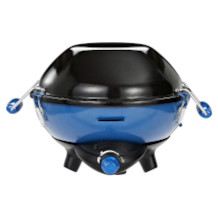
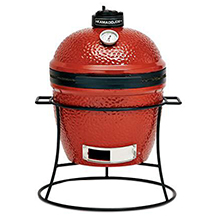
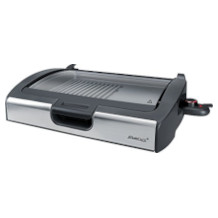
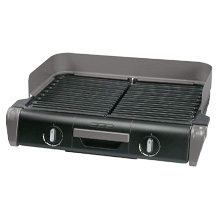
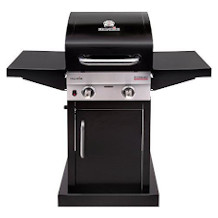
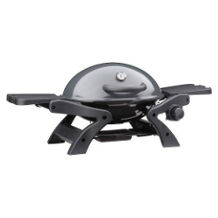
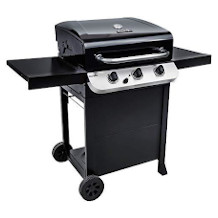






 2,496 reviews
2,496 reviews
